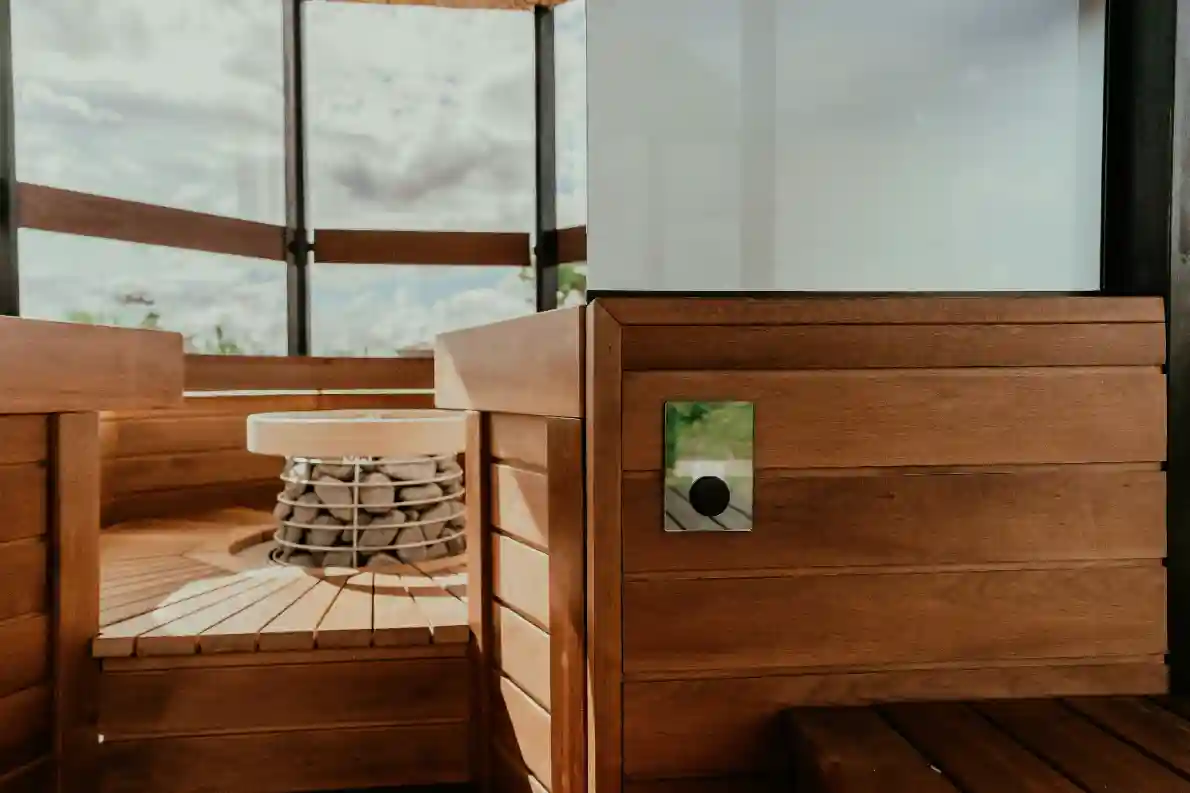Think you don't have enough space for a sauna? Think again. I've helped homeowners install amazing saunas in spaces that initially seemed impossible—under staircases, in closets, even in large bathroom corners. The secret isn't having lots of space; it's using available space intelligently.
Let's explore clever strategies for building compact indoor saunas that don't sacrifice comfort or performance. You'll discover that even small spaces can accommodate a functional, enjoyable sauna with proper planning.
Minimum Space Requirements Reality Check
First, let's establish what's actually feasible. The absolute minimum for a functional sauna is approximately 3 feet by 3 feet with 6.5 feet ceiling height—about 9 square feet of floor space. This is extremely tight and suitable only for solo use, but it proves that compact saunas work.
Practical Minimum Dimensions
For a more comfortable experience, aim for 4 feet by 4 feet minimum (16 square feet). This allows space for:
- A comfortable bench width (18-20 inches)
- Proper heater clearances (6-8 inches from walls)
- Room to move and adjust position
- Door swing clearance
With 4x4, one person can sit or recline comfortably. Two people can squeeze in if they're friendly. Anything smaller becomes more like a standing sweat box than a traditional sauna experience.
| Sauna Size | Square Footage | Capacity | Comfort Level |
|---|---|---|---|
| 3' × 3' | 9 sq ft | 1 person | Minimal |
| 4' × 4' | 16 sq ft | 1-2 people | Adequate |
| 4' × 5' | 20 sq ft | 2 people | Comfortable |
| 5' × 5' | 25 sq ft | 2-3 people | Spacious |
Ideal Locations for Small Saunas
Small saunas fit in surprising places. Let's explore the best options:
Corner Installations
Corners are perfect for compact saunas. You leverage two existing walls, reducing construction. Corner placement often feels less cramped than middle-of-room installations because the diagonal creates interesting space.
Bathroom corners work especially well. You have existing plumbing, ventilation, and typically waterproof flooring. Bathroom sauna installations maximize space utilization brilliantly.
Closet Conversions
Large walk-in closets (5x5 or larger) convert beautifully into saunas. You already have walls, ceiling, and often electrical access. The main work involves adding insulation, vapor barrier, and interior paneling.
Standard reach-in closets (2-3 feet deep) typically don't work due to insufficient depth for comfortable seating. However, double closets or closets in older homes with generous dimensions might work.
Under-Staircase Spaces
The area under stairs offers unique sauna potential. The sloped ceiling creates interesting aesthetics, and the space would otherwise go unused. The key challenge is ensuring adequate headroom—you need at least 6.5 feet at the highest point.
Design benches to work with the slope. Position the heater on the higher side where you have more vertical clearance.
Garage and Basement Corners
Garages and basements typically offer flexibility for corner installations. These locations provide good access for ventilation venting to exterior and proximity to electrical panels. Basement installations offer particular advantages for small sauna projects.

Space-Saving Design Strategies
Smart design makes small saunas feel larger and work better.
Bench Configuration
In compact saunas, single-tier benches often work better than traditional two-tier setups. Install one comfortable bench at optimal height (38-42 inches from floor). This eliminates the space lost to lower bench and step areas.
Consider L-shaped bench layouts in square spaces. Two perpendicular benches create multiple seating options without consuming excessive floor space.
Door Selection
Outward-swinging doors save precious interior space. They're also safer—users can always exit easily. Glass doors make small saunas feel significantly larger by maintaining visual connection to the outside space.
Standard sauna doors are 24 inches wide. In truly tight spaces, consider 20-inch doors—slightly snug for entry but workable for most people and saves 4 inches of width.
Heater Placement
Compact heaters (3-4.5 kW models) are physically smaller than larger units, saving crucial inches. Wall-mounted heaters often work better than floor models in tight spaces.
Position heaters in corners where they don't interfere with bench layouts or traffic flow. Some compact saunas use heaters mounted higher on walls to free up floor-level space.
Built-in Storage
In small saunas, eliminate freestanding accessories. Build towel hooks, cup holders, and backrest mounting directly into wall panels. Every inch you're not storing items is space for people.
Maintaining Comfort in Small Spaces
Compact saunas work best when designed for actual use patterns rather than theoretical capacity.
Ventilation Importance
Small saunas need excellent ventilation more than large ones. With less air volume, proper circulation becomes critical for comfort. Don't skip ventilation vents or undersize them—use the same vent sizes recommended for larger saunas.
Temperature Gradients
Small spaces heat more uniformly than large ones, which is actually an advantage. You won't have dramatic temperature differences between floor and ceiling. This makes single-tier bench designs work especially well—the temperature stays consistent at sitting height.
Ceiling Height Considerations
With limited floor space, proper ceiling height becomes even more important for preventing claustrophobia. Aim for 7 feet if possible. If you're stuck with 6.5-foot ceilings, use lighter wood colors and good lighting to create openness.
Small Sauna Budget Considerations
Smaller saunas should cost less, right? Usually yes, but not always proportionally less than larger saunas.
Cost Factors
You save on:
- Less wood material (walls, benches, paneling)
- Smaller, less expensive heater
- Reduced insulation quantities
- Smaller door (sometimes)
You still pay full price for:
- Electrical installation (circuit, wire, labor)
- Door frame and installation
- Ventilation vents and accessories
- Lighting fixtures
Typical costs for 4x4 DIY sauna: $2,500-4,000 including materials and professional electrical work. A 6x6 sauna might cost $4,000-6,000—larger but not proportionally more expensive. The first costs (electrical, door, permits) constitute a larger percentage of total cost in small saunas.
Pre-Fab Sauna Kits for Small Spaces
Several manufacturers offer compact sauna kits designed specifically for small spaces:
Advantages of Kits
- Pre-cut materials reduce construction time and mistakes
- Designed with compact dimensions in mind
- Include all necessary components
- Often include detailed instructions
- Some offer custom sizing for unusual spaces
Quality compact sauna kits cost $2,000-4,500 for 4x4 to 5x5 sizes. This typically includes everything except electrical work, which you'll hire separately.
Common Small Sauna Mistakes
Learn from what doesn't work:
- Too small benches: Don't reduce bench width below 18 inches to save space. Uncomfortable benches ruin the experience.
- Inadequate heater sizing: Use proper sizing calculations even for small saunas. Undersized heaters struggle to maintain temperature.
- Poor ventilation: Small doesn't mean you can skip proper air circulation.
- Dark materials: Cedar is beautiful but makes small spaces feel smaller. Consider lighter woods.
- No planning for maintenance access: Ensure you can reach heater, electrical connections, and ventilation vents for servicing.
Real-World Examples
A homeowner in Seattle converted a 4x5 foot bathroom corner into a stunning sauna using hemlock paneling and a 4 kW heater. The glass door kept the bathroom feeling open while providing complete sauna functionality. Total cost: approximately $3,200 DIY with professional electrical work.
Another project transformed a 5x5 foot walk-in closet into a two-person sauna with cedar walls and L-shaped benches. By using the existing closet door opening (eliminating sauna door cost) and painting the exterior wall white, they created an attractive sauna for under $2,800.
Making Your Small Sauna Project Successful
Follow these steps for small sauna success:
- Measure carefully: Verify dimensions multiple times before purchasing materials
- Plan airflow: Map out intake and exhaust vent locations early
- Choose appropriate materials: Consider lighter woods and glass elements to maximize perceived space
- Size heater properly: Use standard sizing calculations—don't go too small
- Maximize efficiency: Excellent insulation and vapor barriers matter even more in compact saunas
- Test ergonomics: Mock up bench heights with temporary structures before finalizing
Small saunas prove that wellness doesn't require mansion-sized spaces. With thoughtful planning and smart design, you can create an intimate, comfortable sauna in surprisingly compact footprints. The key is working with your space rather than fighting against it.
For comprehensive planning guidance regardless of size, refer to our complete design guide. And if you're building from scratch, our DIY construction guide walks through every step.

